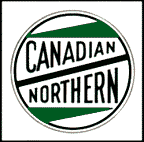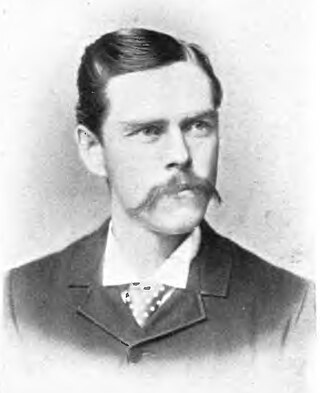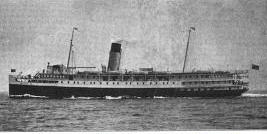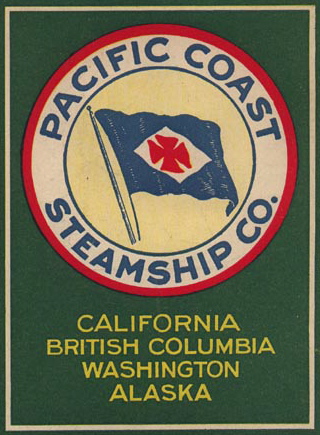
The Canadian Pacific Railway, also known simply as CPR or Canadian Pacific and formerly as CP Rail (1968–1996), is a Canadian Class I railway incorporated in 1881. The railway is owned by Canadian Pacific Kansas City Limited, known until 2023 as Canadian Pacific Railway Limited, which began operations as legal owner in a corporate restructuring in 2001.

The Canadian Northern Railway (CNoR) was a historic Canadian transcontinental railway. At its 1923 merger into the Canadian National Railway, the CNoR owned a main line between Quebec City and Vancouver via Ottawa, Winnipeg, and Edmonton.
Canadian Pacific Limited was created in 1971 to own properties formerly owned by Canadian Pacific Railway (CPR), a transportation and mining giant in Canada. In October 2001, CPR completed the corporate spin-offs of each of the remaining businesses it had not sold, including Canadian Pacific Railway Limited.

CP Ships was a large Canadian shipping company established in the 19th century. From the late 1880s until after World War II, the company was Canada's largest operator of Atlantic and Pacific steamships. Many immigrants travelled on CP ships from Europe to Canada. In 1914 the sinking of the Canadian Pacific steamship RMS Empress of Ireland just before World War I became largest maritime disaster in Canadian history. The company provided Canadian Merchant Navy vessels in World Wars I and II. Twelve vessels were lost due to enemy action in World War II, including the RMS Empress of Britain, which was the largest ship ever sunk by a German U-boat.

RMS Empress of Japan, also known as the "Queen of the Pacific", was an ocean liner built in 1890–1891 by Naval Construction & Armaments Co, Barrow-in-Furness, England for Canadian Pacific Steamships (CP). This ship – the first of two CP vessels to be named Empress of Japan – regularly traversed the trans-Pacific route between the west coast of Canada and the Far East until 1922. During the First World War she served as armed merchant cruiser, becoming HMS Empress of Japan for the period that she was a commissioned ship of the Royal Navy.

Port McNicoll is a community in the Canadian province of Ontario. It is located in the Simcoe County township of Tay.

SS Keewatin is a passenger liner which once travelled between Port Arthur/Fort William on Lake Superior and Port McNicoll on Georgian Bay in Ontario, Canada. She carried passengers between these ports for the Canadian Pacific Railway's Great Lakes steamship service. Keewatin also carried packaged freight goods for the railway at these ports.

James William Troup was an American steamship captain, Canadian Pacific Railway administrator and shipping pioneer.

RMS Empress of India was an ocean liner built in 1890-1891 by Naval Construction & Armaments Co, Barrow-in-Furness, England for Canadian Pacific Steamships. This ship would be the first of two CP vessels to be named Empress of India, and on 28 April 1891, she was the first of many ships named Empress arriving at Vancouver harbor.

SS Princess Helene was a passenger and cargo ferry operated by the Canadian Pacific Railway (CPR).

MV Princess of Vancouver was a passenger vessel in the Pacific coastal service fleet of the Canadian Pacific Railway (CPR).

SS Princess Alice was a passenger vessel in the coastal service fleet of the Canadian Pacific Railway (CPR) during the first half of the 20th century.

The Canadian Pacific Railway Coast Service, also known as the British Columbia Coast Steamships (BCCS), was a division of Canadian Pacific Railway (CPR), which began operating Pacific coastal shipping routes in the late 19th century. The development of coastal passenger and cargo shipping routes extended from British Columbia to Alaska and to Seattle, Washington in the United States.

The Canadian Pacific River Lake and River Service, also known as the British Columbia Lake and River Service, was a division of Canadian Pacific Railway (CPR) which began operating passenger and cargo shipping routes along British Columbia's inland waters during the late 19th century.

SS Princess Adelaide was a passenger vessel in the coastal service fleet of the Canadian Pacific Railway (CPR) during the first half of the 20th century.

SS Princess Mary was a passenger vessel in the coastal service fleet of the Canadian Pacific Railway (CPR) during the first half of the 20th century.

The Pacific Coast Steamship Company was an important early shipping company that operated steamships on the west coast of North America. It was first organized in 1867 under the name Goodall, Nelson and Perkins. The Goodall, Nelson & Perkins Steamship Company was formed in 1875, but a year later was reorganized as the Pacific Coast Steamship Company. In 1916 the Admiral Line bought the shipping interests of the company.
The SS Princess Louise was a 331-foot steamship, named in honor of Louise, Princess Royal and Duchess of Fife, Queen Victoria's granddaughter. The ship was part of the Canadian Pacific Railway's "Princess" fleet, the coastal counterparts to CPR's "Empress" fleet of passenger liners which sailed on trans-Pacific and trans-Atlantic routes. The ships of the British Columbia Coast Steamships came to be called "pocket liners" because they offered on smaller vessels the superior class of service, splendid amenities and luxurious decor equal to great ocean liners.
















